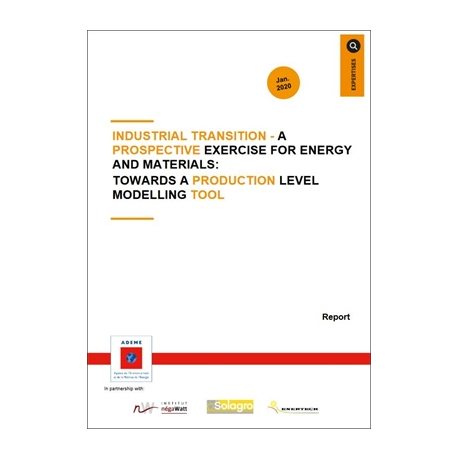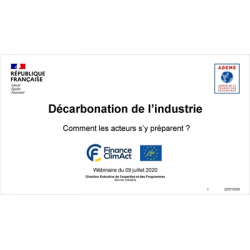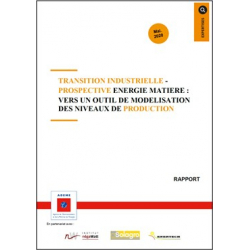 Agrandir l'image
Agrandir l'image
Industrial transition - a prospective exercise for energy and materials : towards a production level modelling tool
Neuf
To facilitate discussions on the energy and environmental transition, ADEME has for several years been suggesting the development of a scenario to predict the trajectory up to 2050 for energy demand and the energy mix in the major energy-consuming sectors: transport, construction, agriculture and industry. In the industrial sector, the two[…] Plus de détails
Fiche technique
| Auteurs | RAUZIER Emmanuel, VERZAT Benoit, LETZ Thomas, METIVIER Simon, MOTEAU Stéphane, RIESER Thierry, JULIEN Camille, Institut NégaWatt, ENERTECH, SOLAGRO |
| Public(s) | Bureaux d'études |
| Entreprises et fédérations professionnelles | |
| Secteur de la recherche | |
| Administration publique | |
| Thématique | Changement climatique et énergie |
| Produire autrement | |
| Collection | Expertise |
| Date d'édition | 2020/01 |
| Nb. de pages | 128 P |
| Format | pdf/A4 |
| Langue | EN |
| Périmètre de publication | National |
En savoir plus
To facilitate discussions on the energy and environmental transition, ADEME has for several years been suggesting the development of a scenario to predict the trajectory up to 2050 for energy demand and the energy mix in the major energy-consuming sectors: transport, construction, agriculture and industry. In the industrial sector, the two main factors determining energy demand are energy efficiency levels, which are well documented and production levels, for which the outlook is more uncertain. ADEME has therefore acquired a tool for modelling the production levels of the 9 industrial sectors that are the largest consumers of energy, namely steel, aluminum, clinker, glass, chlorine, ammonia, ethylene, paper and cardboard and sugar. The tool is called PEPIT0 for "Perspectives for the Evolution of Industrial Production for a 0-carbon Trajectory" in French, and is based on the evolution of consumer markets for these materials with a particular focus on those impacted by the Energy Transition (buildings, transport, packaging etc). The methodology for this work comprises two key elements that have rarely been jointly modelled until now: • a matrix representation of the "input-output table" type connecting the production and consumption of the 9 materials studied to their consumer markets. This quantization serves as a point of reference. It was made for the year 2014 on the basis of national or international data and notably includes international trade and recycling aspects • The development of production trajectories for the 9 materials studied, from this point of reference thanks to the formulation of hypotheses associated with the main consumer markets





